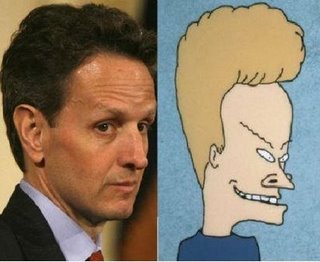In case you might be wondering whether the miscreants responsible for causing the financial crisis might ever be prosecuted by Attorney General Eric Hold-harmless – don’t hold your breath. At the close of 2010, I expressed my disappointment and skepticism that the culprits responsible for having caused the financial crisis would ever be brought to justice. I found it hard to understand why neither the Securities and Exchange Commission nor the Justice Department would be willing to investigate malefaction, which I described in the following terms:
We often hear the expression “crime of the century” to describe some sensational act of blood lust. Nevertheless, keep in mind that the financial crisis resulted from a massive fraud scheme, involving the packaging and “securitization” of mortgages known to be “liars’ loans”, which were then sold to unsuspecting investors by the creators of those products – who happened to be betting against the value of those items. In consideration of the fact that the credit crisis resulting from this scam caused fifteen million people to lose their jobs as well as an expected 8 – 12 million foreclosures by 2012, one may easily conclude that this fraud scheme should be considered the crime of both the last century as well as the current century.
During that same week, former New York Mayor Ed Koch wrote an article which began with the grim observation that no criminal charges have been brought against any of the malefactors responsible for causing the financial crisis:
Looking back on 2010 and the Great Recession, I continue to be enraged by the lack of accountability for those who wrecked our economy and brought the U.S. to its knees. The shocking truth is that those who did the damage are still in charge. Many who ran Wall Street before and during the debacle are either still there making millions, if not billions, of dollars, or are in charge of our country’s economic policies which led to the debacle.
“Accountability” is a relative term. If you believe that the imposition of fines – resulting from civil actions by the Justice Department – could provide accountability for the crimes which led to the financial crisis, then you might have reason to feel enthusiastic. On the other hand if you agree with Matt Taibbi’s contention that some of those characters deserve to be in prison – then get ready for another disappointment.
Last week, Reuters described plans by the Justice Department to make use of President Obama’s Financial Fraud Task Force (which I discussed last January) by relying on a statute (FIRREA- the Financial Institutions Reform, Recovery, and Enforcement Act) which was passed in the wake of the 1980s Savings & Loan crisis:
FIRREA allows the government to bring civil charges if prosecutors believe defendants violated certain criminal laws but have only enough information to meet a threshold that proves a claim based on the “preponderance of the evidence.”
Adam Lurie, a lawyer at Cadwalader, Wickersham & Taft who worked in the Justice Department’s criminal division until last month, said that although criminal cases based on problematic e-mails without a cooperating witness could be difficult to prove, the same evidence could meet a “preponderance” standard.
On the other hand, William K. Black, who was responsible for many of the reforms which followed the Savings & Loan Crisis, has frequently emphasized that – unlike the 2008 financial crisis – the S&L Crisis actually resulted in criminal prosecutions against those whose wrongdoing was responsible for the crisis. On December 28, Black characterized the failure to prosecute those crimes which led to the financial crisis as “de facto decriminalization of elite financial fraud”:
The FBI and the DOJ remain unlikely to prosecute the elite bank officers that ran the enormous “accounting control frauds” that drove the financial crisis. While over 1000 elites were convicted of felonies arising from the savings and loan (S&L) debacle, there are no convictions of controlling officers of the large nonprime lenders. The only indictment of controlling officers of a far smaller nonprime lender arose not from an investigation of the nonprime loans but rather from the lender’s alleged efforts to defraud the federal government’s TARP bailout program.
What has gone so catastrophically wrong with DOJ, and why has it continued so long? The fundamental flaw is that DOJ’s senior leadership cannot conceive of elite bankers as criminals.
This isn’t (just) about revenge. Bruce Judson of the Roosevelt Institute recently wrote an essay entitled “For Capitalism to Survive, Crime Must Not Pay”:
In effect, equal enforcement of the law is not simply important for democracy or to ensure that economic activity takes place, it is fundamental to ensuring that capitalism works. Without equal enforcement of the law, the economy operates with participants who are competitively advantaged and disadvantaged. The rogue firms are in effect receiving a giant government subsidy: the freedom to engage in profitable activities that are prohibited to lesser entities. This becomes a self-reinforcing cycle (like the growth of WorldCom from a regional phone carrier to a national giant that included MCI), so that inequality becomes ever greater. Ultimately, we all lose as our entire economy is distorted, valuable entities are crushed or never get off the ground because they can’t compete on a playing field that is not level, and most likely wealth is destroyed.
Does the Justice Department really believe that it is going to impress us with FIRREA lawsuits? We’ve already had enough theatre – during the Financial Crisis Inquiry Commission hearings and the April 2010 Senate Permanent Subcommittee on Investigations hearing, wherein Goldman’s “Fab Four” testified about selling their customers the Abacus CDO and that “shitty” Timberwolf deal. It’s time for some “perp walks”.
